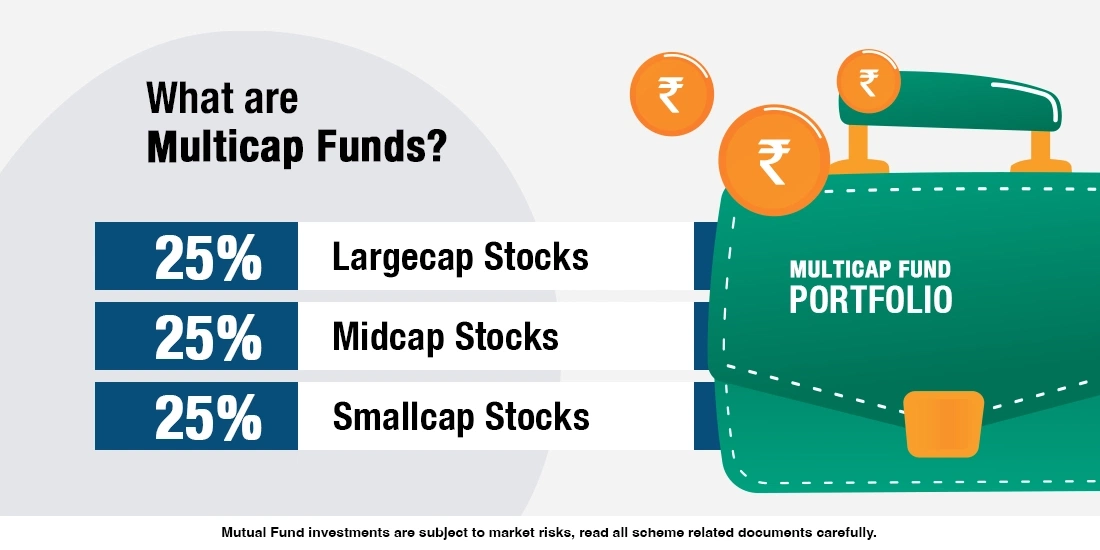What are Multi Cap Funds?
2min 4 seconds read

Have you ever come across fund names like XYZ Multi Cap Fund while looking for information on mutual funds and wondered how these are different from the more popular large-cap funds? As the name suggests, a Multicap fund invests across large, mid, and small cap companies thus offering diversification across market caps in its portfolios.
As per SEBI’s product categorization circular issued in Oct 2017 that came into effect in June 2018, equity funds can be classified into large caps, mid caps, and small caps based on the kind of stocks they hold in their portfolio. There are many publicly listed companies on various exchanges in India. Large cap refers to the top 100 publicly listed companies in India by full market capitalization (market capitalization = no. of publicly listed shares * price of each share). Mid cap refers to the 101st to 250th company in terms of full market capitalization, while 251st company onwards in terms of full market capitalization are called small caps.
Large cap funds invest in the large cap companies which have a predictable and stable growth potential while small cap funds invest in small cap companies that are currently going through a high potential growth stage but are equally risky. Large cap funds are likely to give lower but stable returns unlike small cap funds which can be more volatile in the short term. Mid cap fund invests in the mid cap companies that have high growth potential but don't exhibit the risk associated with small caps since these companies have already attained certain scale and stability. Mid cap funds may offer higher returns than large caps without being too risky like the small cap funds. But they still have some element of risk that is higher than those of large cap funds.
SEBI has issued clear guidelines (on September 11, 2020), for asset allocation across the different market cap segments that the Multicap Mutual Fund category must follow. Multi cap funds are required to hold at least 75% of their assets in equity and equity related instruments at any point in time. The portfolio must allocate at least 25% of its assets to large-cap stocks, 25% to mid-cap stocks, and another 25% to small-cap stocks. While a Multicap Growth Fund is a good option for diversification and long-term wealth creation, it can also be very risky in the short-term since it has at least 50% exposure to small and mid-cap stocks which are very risky in the short-term. The upper limit for market cap exposure also limits the fund manager’s flexibility to switch allocation between various market cap stocks depending on his/her market outlook.
Investors should carefully evaluate their existing Mutual Fund investments and current exposure to the various market cap segments before adding a Multicap Fund to their portfolio. Multi cap funds are unsuitable for those who have a time horizon of less than 5-7 years or have low risk appetite.